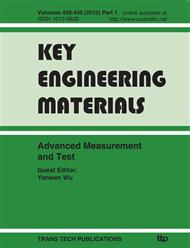p.1537
p.1543
p.1549
p.1555
p.1561
p.1567
p.1572
p.1577
p.1581
New Non-Equidistant Optimum GM(1,1) of Line-Drawing Data Processing in Computer Aided Design
Abstract:
Based on the exponential trait of grey model and the definition of integral, the reconstruction method of GM(1,1) model’s background value of non-equal distance sequence was put forward and a kind of non-equidistant optimum grey model GM(1,1) to line-drawing data processing in computer aided design was proposed. The mean relative error is taken as the optimum objective function. The power mutation particle swarm optimization program PMPSO1.0 was compiled with Matlab 7.6 software to make optimization. Two examples were given, their results were compared with the results based other Grey models, respectively. The method can be used for model establishing on equal interval, as well as on non-interval. Moreover, GM(1,1) model’s fitting precision and prediction is advanced and the scope of application is enlarged. The model is simple and practical, and has a generalizing value in the field of CAD.
Info:
Periodical:
Pages:
1561-1566
Citation:
Online since:
June 2010
Authors:
Price:
Сopyright:
© 2010 Trans Tech Publications Ltd. All Rights Reserved
Share:
Citation:


